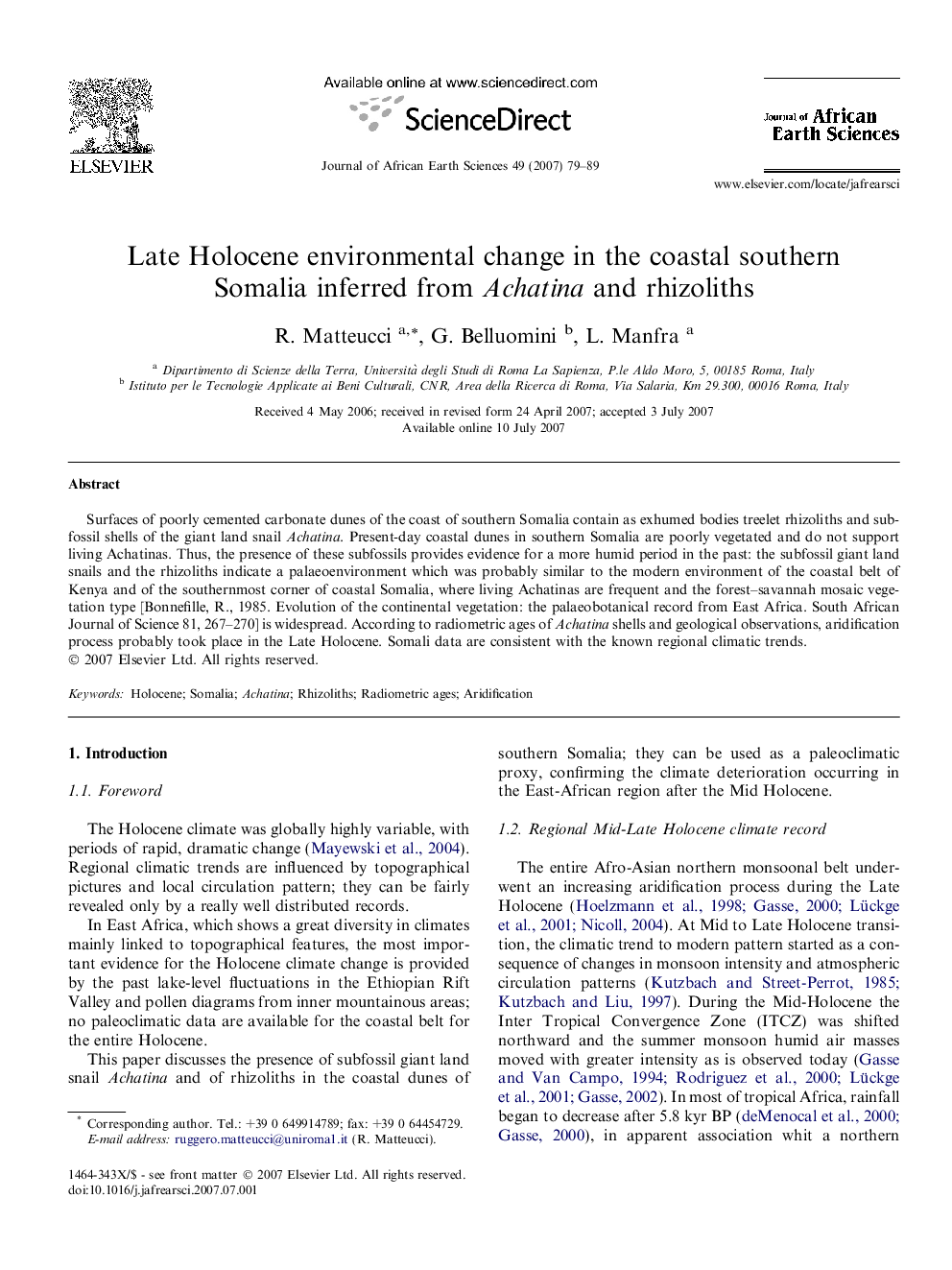| Article ID | Journal | Published Year | Pages | File Type |
|---|---|---|---|---|
| 4729748 | Journal of African Earth Sciences | 2007 | 11 Pages |
Abstract
Surfaces of poorly cemented carbonate dunes of the coast of southern Somalia contain as exhumed bodies treelet rhizoliths and subfossil shells of the giant land snail Achatina. Present-day coastal dunes in southern Somalia are poorly vegetated and do not support living Achatinas. Thus, the presence of these subfossils provides evidence for a more humid period in the past: the subfossil giant land snails and the rhizoliths indicate a palaeoenvironment which was probably similar to the modern environment of the coastal belt of Kenya and of the southernmost corner of coastal Somalia, where living Achatinas are frequent and the forest-savannah mosaic vegetation type [Bonnefille, R., 1985. Evolution of the continental vegetation: the palaeobotanical record from East Africa. South African Journal of Science 81, 267-270] is widespread. According to radiometric ages of Achatina shells and geological observations, aridification process probably took place in the Late Holocene. Somali data are consistent with the known regional climatic trends.
Related Topics
Physical Sciences and Engineering
Earth and Planetary Sciences
Geology
Authors
R. Matteucci, G. Belluomini, L. Manfra,
